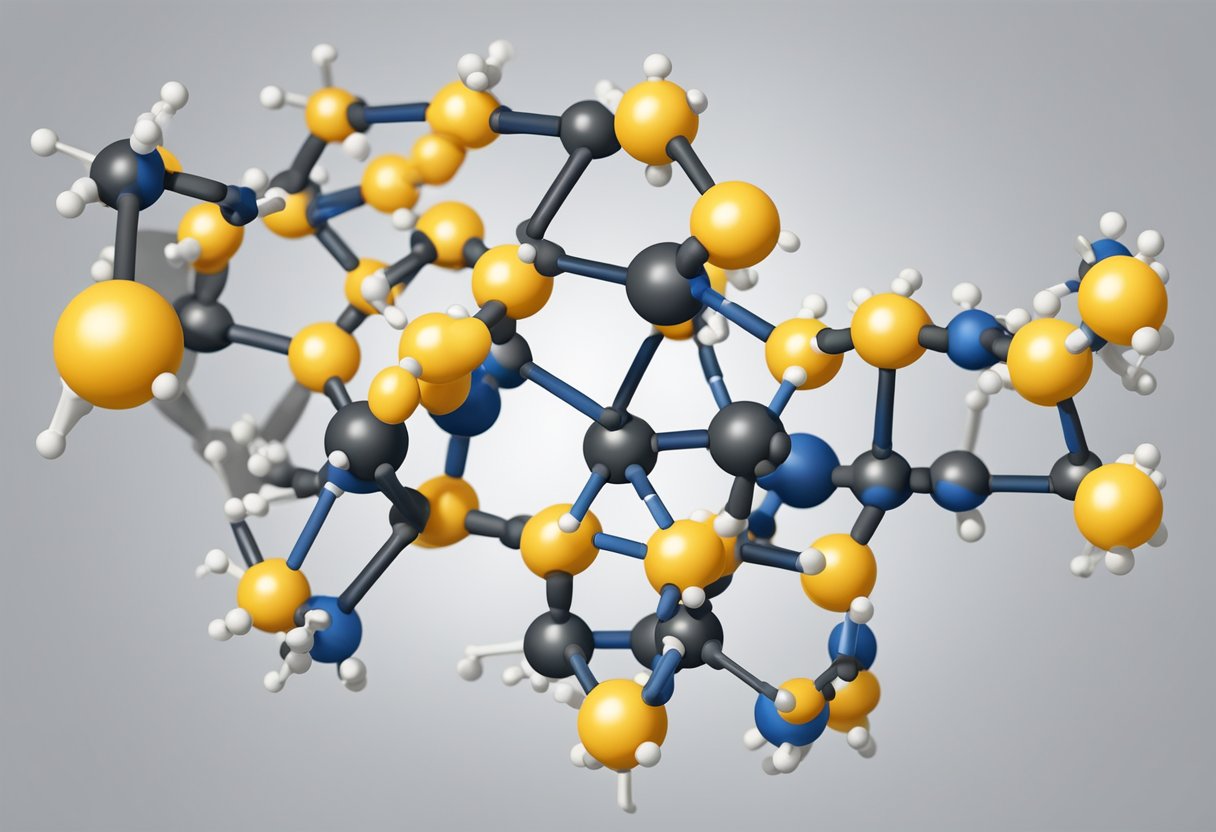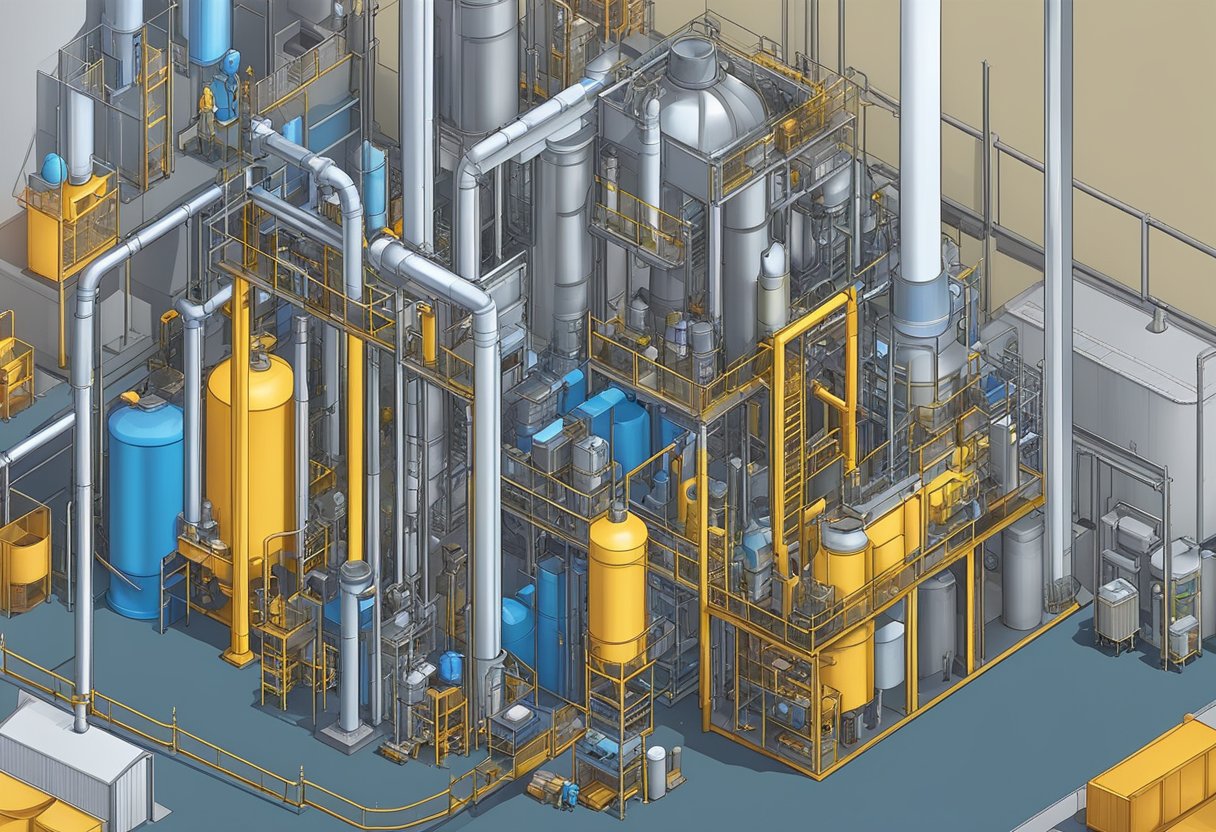Phenol Resorcinol Formaldehyde Resin: Properties and Applications
19/01/2024
Phenol resorcinol formaldehyde resin, also known as PRF resin, is a synthetic polymer that has gained popularity in recent years due to its exceptional bonding properties. PRF resin is commonly used in the construction industry for bonding wood, laminates, and other materials. It is also used in the aerospace and automotive industries for its high strength and durability.

PRF resin is made by combining phenol, resorcinol, and formaldehyde in a specific ratio. The resulting polymer is highly cross-linked, which gives it its exceptional bonding properties. PRF resin is known for its ability to bond to a variety of materials, including wood, metal, and plastic. It is also resistant to water, heat, and chemicals, making it ideal for use in harsh environments.
Overall, chembord PRF resin is a versatile and reliable adhesive that has a wide range of applications in various industries. Its exceptional bonding properties, resistance to harsh environments, and ability to bond to a variety of materials make it an ideal choice for many construction and manufacturing projects.
Chemical Structure of Phenol Resorcinol Formaldehyde Resin

Phenol resorcinol formaldehyde resin (PRF) is a thermosetting adhesive that is commonly used in the construction industry for its high strength and durability. The chemical structure of PRF is complex and consists of three main components: phenol, resorcinol, and formaldehyde.
Phenol and resorcinol are both aromatic compounds that contain hydroxyl groups (-OH) which make them highly reactive. Formaldehyde, on the other hand, is a simple aldehyde that acts as a cross-linking agent between the phenol and resorcinol molecules.
The chemical reaction that occurs between these three components results in the formation of a three-dimensional network of covalent bonds. This network is responsible for the high strength and durability of PRF.
The exact chemical structure of PRF can vary depending on the specific formulation used, but in general, it consists of a mixture of oligomers and polymers. These molecules are characterized by the presence of phenolic and resorcinolic units that are cross-linked by formaldehyde.
Overall, the chemical structure of PRF is highly complex and can be difficult to fully characterize. However, its unique properties make it a valuable adhesive for a wide range of construction applications.
Synthesis and Production

Phenol resorcinol formaldehyde (PRF) resin is synthesized by reacting phenol and resorcinol with formaldehyde in the presence of a catalyst. The reaction typically takes place under alkaline conditions, with sodium hydroxide or ammonia being commonly used as the catalyst. The molar ratio of formaldehyde to phenol and resorcinol can vary depending on the desired properties of the final resin.
The production of PRF resin involves several stages, including the preparation of the reactants, the mixing of the reactants, and the curing of the resin. The reactants are typically prepared by dissolving phenol and resorcinol in water, followed by the addition of formaldehyde and the catalyst. The mixture is then stirred and heated to promote the reaction between the reactants.
Once the reaction is complete, the PRF resin is typically mixed with a filler material, such as wood flour, to improve its mechanical properties. The mixture is then formed into the desired shape and cured under heat and pressure. The curing process is critical to the properties of the final resin, as it determines the degree of cross-linking and the resulting strength and durability.
Overall, the synthesis and production of PRF resin is a complex process that requires careful control of the reaction conditions and curing process. However, when produced correctly, PRF resin can exhibit excellent mechanical properties and is commonly used in a variety of applications, including adhesives, coatings, and composites.
Properties and Characteristics

Phenol resorcinol formaldehyde resin (PRF) is a type of thermosetting adhesive that is commonly used in the construction industry. It is known for its excellent bonding strength, resistance to water and heat, and durability.
PRF resin is typically a dark brown liquid that can be mixed with a hardener to form a solid adhesive. It has a high viscosity and can be applied to a variety of surfaces, including wood, metal, and concrete.
One of the key properties of PRF resin is its ability to bond well with wood. It is commonly used in the production of plywood, laminated veneer lumber, and other engineered wood products. This is due to its ability to penetrate the wood fibers and create a strong bond that is resistant to moisture and heat.
In addition to its bonding strength, PRF resin is also known for its resistance to fire. It has a high ignition temperature and does not release toxic fumes when burned, making it a safe choice for use in building construction.
Overall, PRF resin is a reliable and durable adhesive that is commonly used in the construction industry. Its excellent bonding strength, resistance to water and heat, and fire resistance make it a popular choice for a variety of applications.
Applications and Uses
Phenol resorcinol formaldehyde resin (PRF) is a versatile adhesive that finds applications in various industries. PRF is widely used in the construction industry for bonding wood, plywood, laminated veneer lumber, and other wood-based products. It is also used in the manufacturing of furniture, doors, and windows, where it provides excellent water resistance and durability.
PRF is also used in the automotive industry for bonding metal, plastic, and composite materials. It is used in the production of automotive parts, such as brake pads, clutch facings, and engine gaskets. PRF provides excellent bonding strength and heat resistance, making it suitable for high-temperature applications.
In the aerospace industry, PRF is used for bonding composite materials, such as carbon fiber and fiberglass, to create lightweight and strong structures. PRF is also used in the manufacturing of aircraft interiors, such as seats, overhead bins, and cabin panels.
PRF has excellent resistance to water, heat, and chemicals, making it suitable for use in harsh environments. It is also used in the marine industry for bonding wood, fiberglass, and metal components. PRF provides excellent bonding strength and durability, making it suitable for use in boat building and repair.
Overall, PRF is a versatile adhesive that finds applications in various industries, where it provides excellent bonding strength, durability, and resistance to harsh environments.
Adhesive Performance
Phenol resorcinol formaldehyde (PRF) resin is a highly effective adhesive for bonding wood and wood-based products. Its excellent water resistance, high strength, and durability make it a popular choice for applications where a strong and long-lasting bond is required.
PRF resin has been extensively tested in various applications, including laminated timber, plywood, and particleboard. In all cases, it has shown exceptional bonding performance, even in harsh environments.
One of the key advantages of PRF resin is its ability to bond with both softwood and hardwood species. It is also highly effective in bonding wood to other materials, such as metals and plastics.
PRF resin is known for its high initial strength and excellent creep resistance. This makes it an ideal choice for load-bearing applications, such as in construction and transportation industries.
In addition to its excellent bonding properties, PRF resin is also known for its ease of use. It can be applied using a variety of methods, including brush, roller, and spray. It also has a long open time, which allows for adjustments to be made before the bond sets.
Overall, PRF resin is a reliable and effective adhesive for bonding wood and wood-based products. Its exceptional performance in harsh environments and load-bearing applications make it a popular choice for a wide range of industries.
Thermal Stability and Fire Resistance
Phenol resorcinol formaldehyde resin is known for its excellent thermal stability and fire resistance. The resin is capable of withstanding high temperatures without losing its mechanical properties. This makes it an ideal material for use in high-temperature applications such as aircraft and spacecraft components.
The thermal stability of phenol resorcinol formaldehyde resin is due to the presence of cross-linked polymer chains. The cross-linking creates a three-dimensional network that is resistant to thermal degradation. As a result, the resin can maintain its mechanical properties even at high temperatures.
In addition to its thermal stability, phenol resorcinol formaldehyde resin also exhibits excellent fire resistance. The resin is self-extinguishing, meaning that it will not continue to burn once the source of ignition is removed. This is due to the presence of phenolic functional groups in the resin, which release water vapor when exposed to heat. The water vapor cools the surrounding area, preventing the resin from igniting.
Overall, the thermal stability and fire resistance of phenol resorcinol formaldehyde resin make it a valuable material for use in high-temperature and fire-prone applications. Its ability to withstand extreme temperatures and self-extinguish in the event of a fire make it a reliable choice for a range of industries.
Environmental Impact and Safety
Phenol resorcinol formaldehyde (PRF) resin is a synthetic polymer that has been widely used in the construction industry due to its excellent adhesive properties. However, like any other chemical substance, PRF resin has potential environmental and safety impacts that need to be considered.
Environmental Impact
PRF resin is not biodegradable and can persist in the environment for a long time. When exposed to the environment, PRF resin can release formaldehyde, a known carcinogen, and volatile organic compounds (VOCs) that can contribute to air pollution. Therefore, proper disposal of PRF resin waste is essential to prevent environmental contamination.
Safety
PRF resin can cause skin and eye irritation upon contact. Inhaling formaldehyde fumes can cause respiratory irritation, coughing, and wheezing. Long-term exposure to formaldehyde can increase the risk of cancer. Therefore, it is crucial to use appropriate personal protective equipment (PPE) when handling PRF resin and to work in well-ventilated areas.
In summary, PRF resin has potential environmental and safety impacts that need to be considered during its use and disposal. Proper handling, storage, and disposal of PRF resin waste are essential to prevent environmental contamination and protect human health.
Regulatory Compliance and Standards
Phenol resorcinol formaldehyde (PRF) resin is a type of adhesive used in various industries, including construction, furniture manufacturing, and aerospace. As with any chemical substance, PRF resin is subject to regulatory compliance and standards to ensure its safe use.
In the United States, the Environmental Protection Agency (EPA) regulates the use of PRF resin under the Toxic Substances Control Act (TSCA). PRF resin is considered a “new chemical substance” under TSCA, meaning that manufacturers must submit a premanufacture notice (PMN) to the EPA before producing or importing the substance. The EPA evaluates the PMN to determine if the substance poses any unreasonable risks to human health or the environment.
In addition to TSCA, PRF resin is subject to various industry standards and regulations. For example, the American National Standards Institute (ANSI) sets standards for the performance of adhesives used in structural wood products, including PRF resin. The ASTM International, a global standards organization, also sets standards for the testing and performance of adhesives, including PRF resin.
Overall, regulatory compliance and standards are essential for ensuring the safe use of PRF resin and other chemical substances. Manufacturers, distributors, and end-users must comply with these regulations and standards to protect human health and the environment.
Market Trends and Demand
Phenol resorcinol formaldehyde resin is a popular adhesive used in the wood industry due to its excellent bonding properties. The demand for this resin is expected to grow steadily in the coming years, driven by the increasing demand for wood-based products such as plywood, laminated veneer lumber, and oriented strand board.
One of the major factors driving the demand for phenol resorcinol formaldehyde resin is the growing construction industry. The use of wood-based products in construction is increasing due to their durability, strength, and cost-effectiveness. This, in turn, is driving the demand for adhesives such as phenol resorcinol formaldehyde resin.
Another factor contributing to the growth of the phenol resorcinol formaldehyde resin market is the increasing demand for furniture. The use of wood-based materials in furniture manufacturing is on the rise due to their aesthetic appeal and durability. Phenol resorcinol formaldehyde resin is an ideal adhesive for furniture manufacturing as it provides excellent bonding strength and water resistance.
In addition, the growing trend of eco-friendly and sustainable products is also driving the demand for phenol resorcinol formaldehyde resin. This resin is known for its low emission of volatile organic compounds, making it an ideal adhesive for environmentally conscious consumers.
Overall, the phenol resorcinol formaldehyde resin market is expected to grow steadily in the coming years, driven by the increasing demand for wood-based products in various industries.
Challenges and Limitations
Phenol resorcinol formaldehyde (PRF) resin is a popular adhesive used in various industries due to its exceptional bonding properties. However, like any other material, it has its limitations and challenges that need to be considered before use.
1. Limited Resistance to Moisture
One of the main limitations of PRF resin is its limited resistance to moisture. The adhesive tends to lose its strength when exposed to moisture for extended periods. This can be a significant challenge in applications that require long-term durability in moist environments.
2. Long Curing Time
PRF resin has a long curing time, which can be a challenge in applications that require fast curing times. The curing time can be reduced by using a catalyst, but this can also affect the adhesive’s properties.
3. High Cost
PRF resin is relatively expensive compared to other adhesives, which can be a limiting factor in some applications. The high cost is due to the complex manufacturing process and the use of high-quality raw materials.
4. Limited Temperature Resistance
PRF resin has limited temperature resistance and tends to lose its strength at high temperatures. This can be a challenge in applications that require high-temperature resistance.
In conclusion, PRF resin is an excellent adhesive with exceptional bonding properties. However, it has its limitations and challenges that need to be considered before use. The limited resistance to moisture, long curing time, high cost, and limited temperature resistance are some of the challenges associated with using PRF resin.




